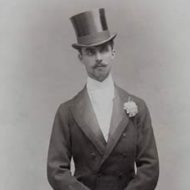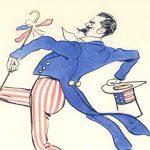 When James Hazen Hyde, only two years out of Harvard, inherited the controlling shares of the powerful Equitable Life Assurance Society, a cast of powerhouse businessmen, including Henry Clay Frick and Edward Harriman, attempted to wrest the company away from him. Hyde was smart, but too young for the job, and had an extravagant social profile. In 1905, when he held “The Hyde Ball,” one of the most famous parties of the Gilded Age, his opponents seized on the lavish evening to prove that he wasn’t fit to head the Equitable. The fight was covered daily for three months in newspapers nationwide, right up to the cliff-hanger climax. His complex and arresting character invites the reader to consider the effects of what Hyde admitted was “too much, too soon.”
When James Hazen Hyde, only two years out of Harvard, inherited the controlling shares of the powerful Equitable Life Assurance Society, a cast of powerhouse businessmen, including Henry Clay Frick and Edward Harriman, attempted to wrest the company away from him. Hyde was smart, but too young for the job, and had an extravagant social profile. In 1905, when he held “The Hyde Ball,” one of the most famous parties of the Gilded Age, his opponents seized on the lavish evening to prove that he wasn’t fit to head the Equitable. The fight was covered daily for three months in newspapers nationwide, right up to the cliff-hanger climax. His complex and arresting character invites the reader to consider the effects of what Hyde admitted was “too much, too soon.”
The Wall Street Journal— “A mother lode of stories about the bad behavior of people with bathtubs full of money…brightly written.”
The New York Times— “After the Ball travels effortlessly from James Hyde’s time to our own…A colorful new book.”
USA Today— “Wonderfully foreboding…exactly on pitch…a textured and compelling tragedy.”
Dallas Morning News— “A sweeping, brilliant, piece of social history.”



